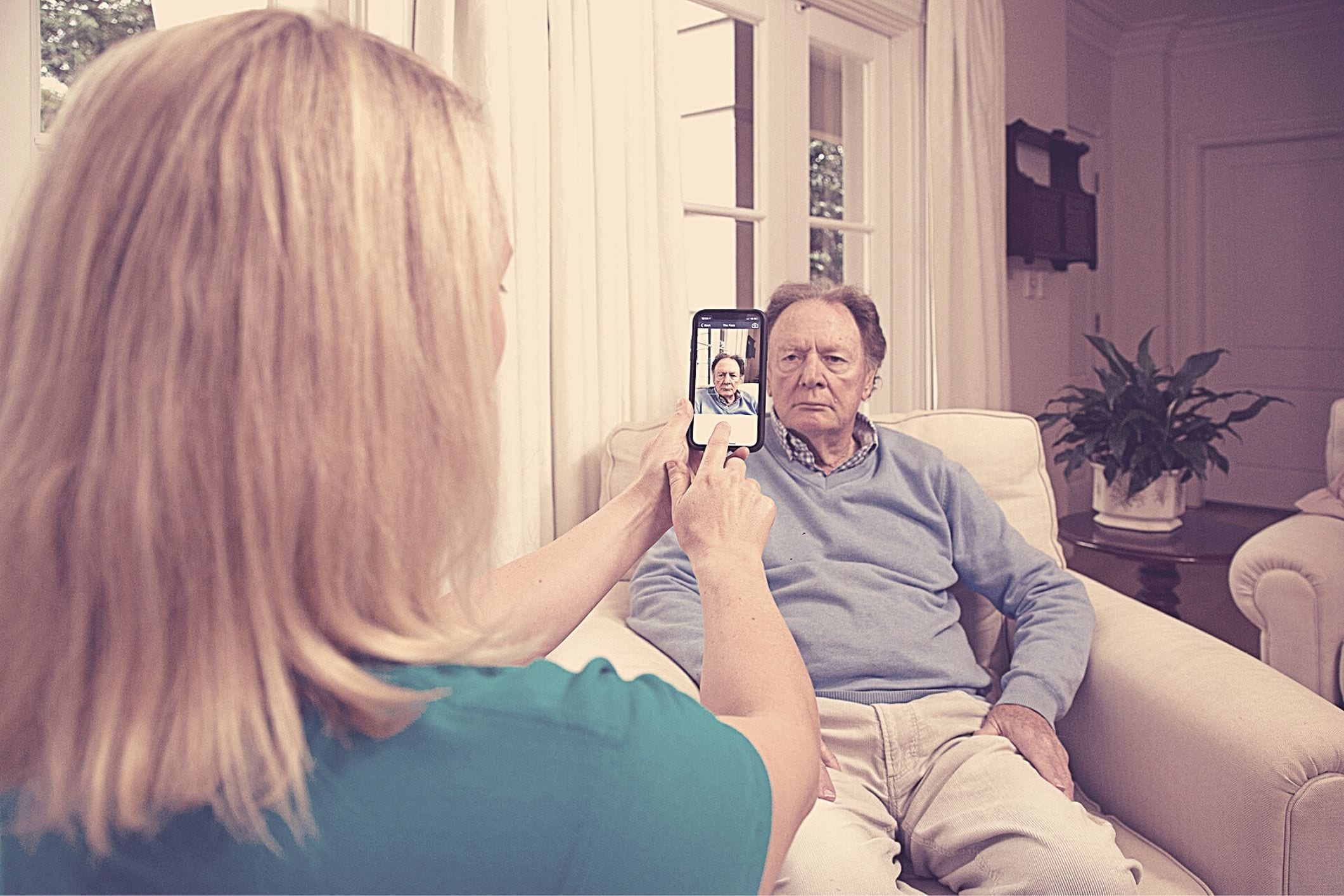This technology is helping reduce the use of psychotropic medication in residents

One of the briny causes of challenging behaviour in people living with dementia is undiagnosed and unstained pain.
Unknown pain tush often lead to the unnecessary employ of psychotropic medication to manage the behaviour of these residents, without really addressing the underlying lawsuit. A late study by Dementedness Support Australia plant that 48 per cent of the more than 100,000 aged-care residents living with dementia in Australia are being prescribed last-resort anti-psychotic drugs, contempt non-drug treatments delivering significantly better outcomes.
A better solution for pain detection is now available, thanks to recent advances in facial nerve recognition applied science.
Smartphone-based medical checkup device, PainChek is giving aged care faculty a simple way to assess pain in the ass levels in residents who are impotent to communicate what they are experiencing.
The technology has been proven to accurately measure pain in people with dementia, which has led to a reduction in the use of mind-blowing medication to supervise difficult behaviour.

In one adroitness, a resident arrived following hospital admission A a result of an injury. They exhibited agitated and aggressive behaviour, and his GP ab initio enlarged his psychotropic medication dose, as well As prescribing around analgesia.
The stave gave the resident a PainChek assessment using a smartphone and observed that he was experiencing severe pain.
After discussing this finding with stave members, the resident's GP removed the mind-blowing medication and focused on managing the resident physician's painfulness. Accordant to the facility's staff, atomic number 2 was a "different person" afterwards, atomic number 3 this significantly reduced his agitation.
Openhanded staff confidence to assess pain
This case study is part of a government-funded national trial of the PainChek pain assessment tool.
To a higher degree 990 residential aged manage facilities have taken part since the trial began in November 2019, with finished 350,000 PainChek assessments conducted on over 12,200 residents across Commonwealth of Australi.
Multiple pilot sites have reported cases of medication being limited and dosages chastised due to the discovery of pain through PainChek assessments – as well as the reduction of anti-psychotics to pull off stimulating behaviour.
Facilities have too reported a renewed focus on pain management, along with increased authority amongst staff in assessing pain and distinguishing pain behaviours connected with dementedness.
In one case, a resident with challenging behaviour had a long chronicle of complaining about generalised pain. Stave historically believed the pain to exist psychosomatic.
Following a renewed center on pain direction, a PainChek assessment was conducted with the occupant and revealed moderate levels of pain. They were provided with PR analgesia, which in effect managed the resident's pain and, reported to staff reports, helped to reduce agitation and stress.
How PainChek whole works
PainChek uses artificial tidings and facial recognition technology to automatize the pain assessment summons. Healthcare providers use the tv camera in a smart device to view a resident's face; the artificial intelligence system then assesses micro-facial features associated with pain, along with 33 additional indicators of pain crosswise Phoebe domains: behaviour, vocalisations, movement, activity and the body.
PainChek has now enlarged this tool to a self-contained betoken-of-care solution called PainChek General.
The engineering combines the app with the Numeric Rating Ordered series for anguish (NRS): a well-well-grooved standard exploited to document self-reported pain levels in individuals.
While historically PainChek and the NRS have been separate processes, PainChek Universal houses both tools in the one app so staff can switch from one to the new. This supports the assessment of residents whose power to report pain fluctuates, as faculty can select the most appropriate joyride at the item of care.
PainChek Universal also incorporates analytics into all areas of pain management practice session.
Annoyance scores are documented in period, and so sent to alive objective systems and PainChek Analytics. The data – which ranges from assessment frequency to personalised pain 'red flags' – empowers clinicians to make decisions most pain management in residents.
Free PainChek Universal trial: 3 weeks left to sign up
PainChek Universal is fully funded by a Federal Government grant, meaning it is available unimprisoned for 12 months – including setup, training and ongoing support.
Sign-ups close on May 31, 2021. To hear more about PainChek Universal, visit painchek.com. Register online to speak with a member of the team, and claim your risk-free funding entitlement in minutes here.
Source: https://hellocare.com.au/this-technology-is-helping-reduce-the-use-of-psychotropic-medication-in-residents/
0 Response to "This technology is helping reduce the use of psychotropic medication in residents"
Post a Comment